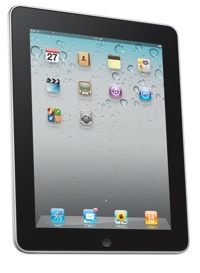Nearly lost amid Apple Inc.’s recent product and software rollouts was one of the most significant announcements of all: the arrival of the company’s Airplay audio streaming system, a technology with the potential to become a Top 10 consumer electronics product, according to the market research firm iSuppli Corp. (http://www.isuppli.com).
At its Special Event on Sept. 1, Apple CEO Steve Jobs showed AirPlay, a system that streams audio, either wirelessly or over Ethernet, to third-party speaker docks, A/V receivers, speakers and more. Far from just being a way to transmit video from the iPad to the AppleTV, as Jobs demonstrated, AirPlay spans the entire audio industry, says iSuppli.
To implement AirPlay, Apple has entered into a partnership with BridgeCo Inc., a U.S. provider of connectivity technologies and solutions. The BridgeCo platform is supported by a growing ecosystem of design partners and Original Design Manufacturers (ODMs), allowing for a rapid incorporation of AirPlay into a diverse range of consumer electronics products. Apple’s AirPlay partners include leading names in the consumer electronics audio industry, including Denon and Bowers & Wilkins.
“AirPlay represents another effort by Apple to stake a leadership position in the burgeoning connected home market,” says Jordan Selburn, principal analyst, consumer electronics, for iSuppli. “The technology leverages Apple’s dominant position in the MP3/PMP player market. With AirPlay, the iPad, iPod and iPhone can be the servers for a home filled with music—and music distribution via iTunes.”
As evidenced by developments at the IFA consumer electronics show in Berlin this month, networked audio is gaining momentum, whether in complete systems like Sonos or in general-purpose equipment such as audio-video receivers supporting open standards such as DLNA. In addition to home music libraries, Internet Radio is also driving an increasing demand for audio that can be accessed seamlessly around the home.
However, the seamless part seems to be the major sticking point, the primary reason being that home audio networks have not grown to the level expected given the consumer’s seemingly insatiable appetite for music.
“Addressing the seamless connection of audio is the area where AirPlay has the potential to be a truly disruptive force in the market, potentially turning it into a Top 10 consumer electronics segment with unit volumes perhaps even comparable to televisions,” Selburn says.
The global television market is expected to amount to more than 230 million units in 2010, iSuppli predicts. Apple has worked some impressive magic for the consumer electronics market in the past, Selburn notes.
The portable audio market is one example, with the evolution from removable media, such as tape or CD-based Walkman-type products, to MP3 players, which saw growth explode when Apple introduced the iPod.
Why did the iPod make such a difference? Apple’s matchless marketing savvy played a role, certainly. However, the iPod’s simplicity and push-button interface to iTunes was doubtless the major factor, delivering a simple and compelling end-to-end solution and consumer experience. Finally, consumers of all ages and technical skills could actually access their stored music on a handheld digital player, says Selburn.
The home audio market could well be on the verge of a similar explosion if Apple does the same with wireless home audio networking as it did with the iPod, he adds. This time, the consumer will be transitioning from the docking station to the next phase — the networked audio client. When consumers don’t have to Google various error codes and reset firewalls in order to enjoy music libraries and Internet radio throughout the home, the networked home audio market could reach a true crescendo.




